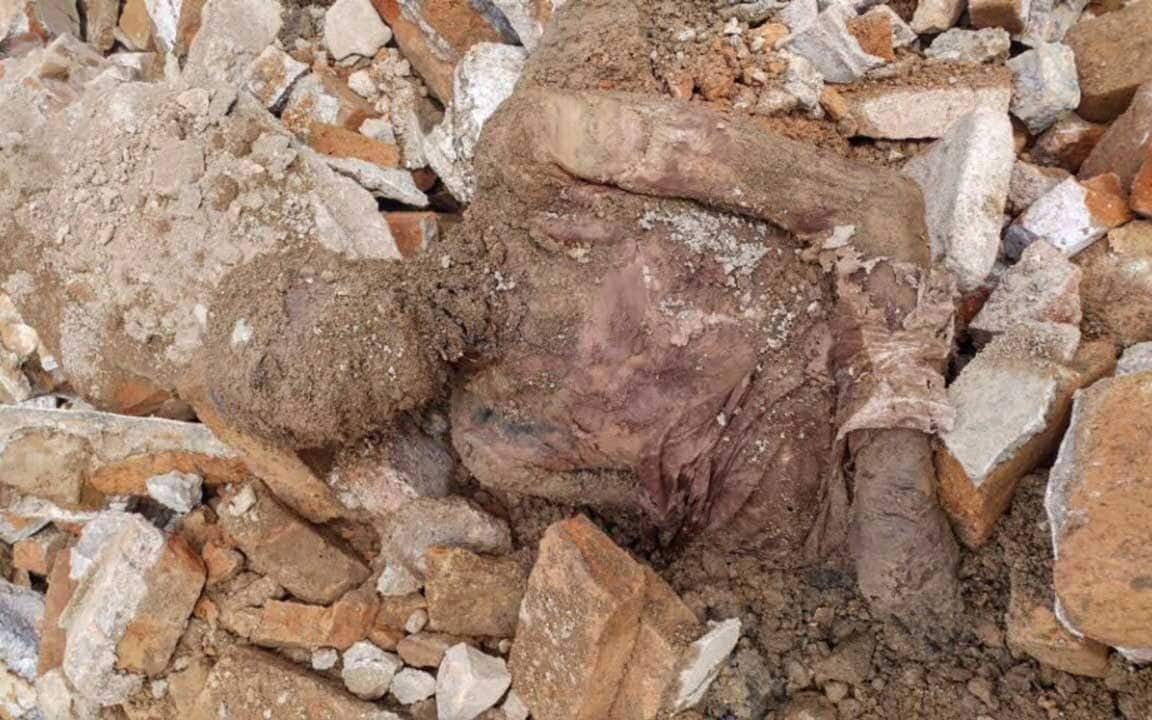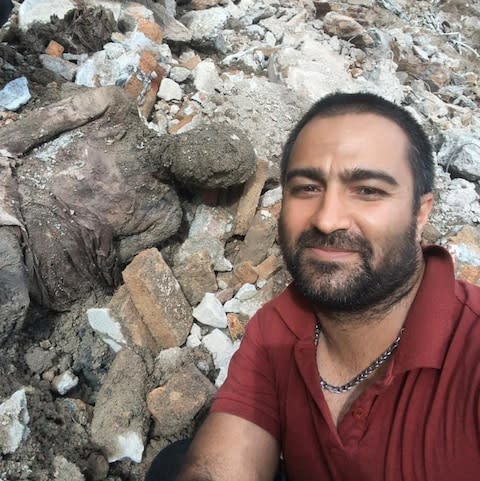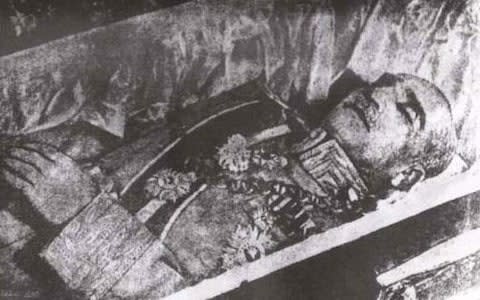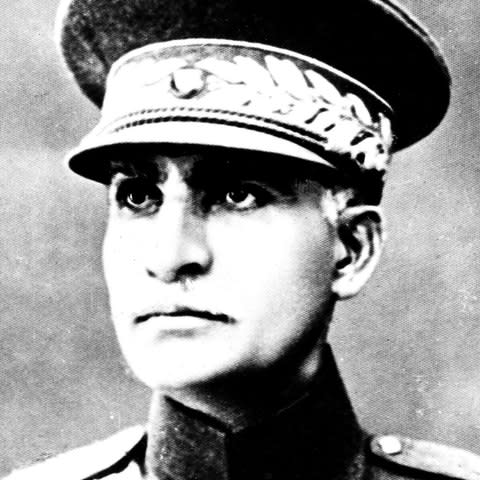Mummified body of the Shah of Iran 'found in Tehran' construction site

A construction worker in southern Tehran may have stumbled across the mummified body of Reza Shah Pahlavi, the Iranian ruler whose son was overthrown in the revolution of 1979.
Builders were carrying out construction work at a Shia shrine in Tehran when they found the body amid a pile of rubble.
Pahlavi was buried in a mausoleum nearby after his death in 1944 but the tomb was blown up by Iranian revolutionaries as they tried to erase all traces of the previous regime.
The shah’s body was never found in the ruins and has been missing for nearly 40 years.
Hassan Khalilabadi, the head of Tehran’s heritage committee, said it was “a possibility” that the corpse may be that of the former Iranian leader. “This will be examined by responsible bodies," he said.

Pahlavi was a military officer who overthrew the ruling Persian dynasty in 1921 and seized power for himself, first becoming the country’s prime minister and then its monarch.
He introduced widespread reforms and is credited by some as the founder of modern Iran. But he was forced from power in 1941 by British and Russian troops and abdicated in favour of his son.
Pahlavi went into exile and died in South Africa in 1944. His son, Mohammad Reza Pahlavi, was overthrown during the Iranian revolution in 1979.

Pahlavi’s legacy is a taboo subject for Iran’s government. While his son is still deeply controversial, some Iranians think fondly of the older Pahlavi because of his modernisation programme and his expansion of some freedoms for women.
During the widespread protests in Iran in late 2017 and early 2018, many protesters shouted out Pahlavi’s name as a way of defying Iran’s revolutionary regime. “Reza Shah, bless your soul,” people cried.
If the body found in Tehran is indeed that of Reza Shah Pahlavi, Iran’s current rulers may have a delicate task figuring out what to do with it.
Islamic custom demands that all bodies be treated with respect but Iranian authorities will also be wary of allowing it to become a rallying point for opposition groups.
A spokesman for the Shah Abdol Azim shrine said the body was not Pahlavi’s. "All the rumours on the social media that claim this mummified body belongs to Reza Shah are false and void of any truth,” he said.

Pahlavi’s grandson, Reza Pahlavi, said in a statement that he was “closely following” the reports that his grandfather’s body had been found. He warned Iran’s government “against any secrecy or lack of transparency” in its handling of the body.
Iranian authorities said the body had been reburied. It was not immediately clear what steps Iran planned to take to verify if the body did belong to Pahlavi.
A widely-shared photograph on social media appeared to show an Iranian construction work taking a selfie with the body after discovering it at the foot of his bulldozer.

